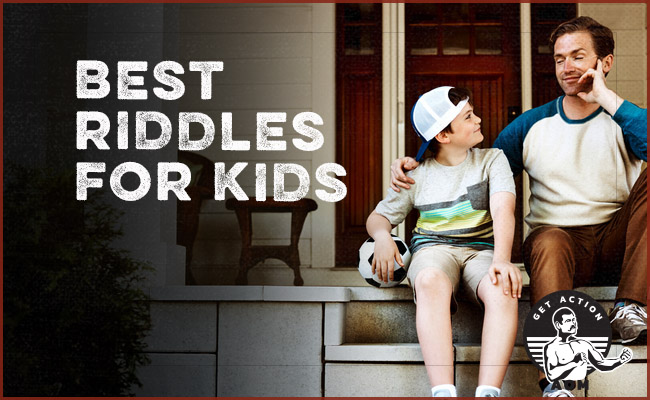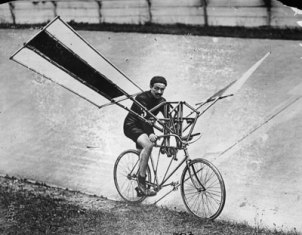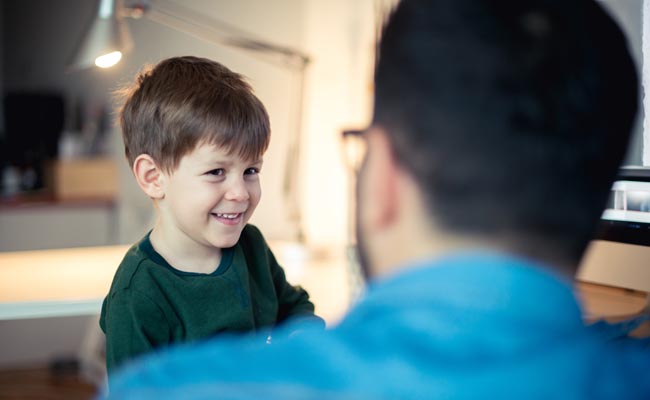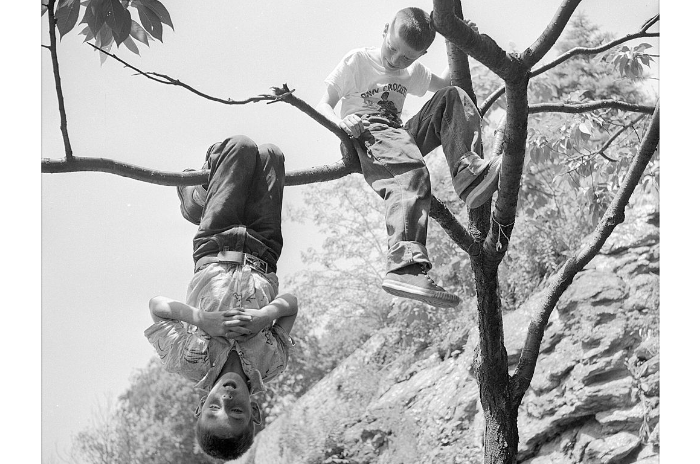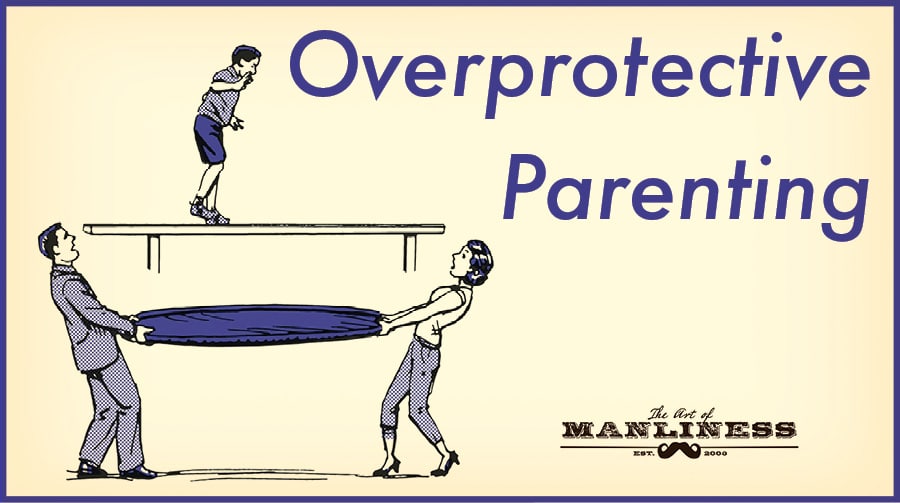
In this series on overprotective parents, we’ve taken a nuanced look at the phenomenon’s origins, explored the question of whether the world is a more dangerous place now than it was several decades ago (it’s not), and delved into the risks that arise when we don’t allow children to do risky things (there are many).
Today, we conclude the series with a discussion of how parents can find a happy medium in raising their kids: allowing them enough experience with risk to foster the development of the kind of competence, confidence, and courage they’ll need to become well-rounded, flourishing adults, while still prioritizing their safety and well-being.
It’s a tough line to walk, but it is possible.
The 3 Keys to Balancing Safety and Risk in Raising Your Kids
The essential key to finding a “golden mean” between safety and risk ultimately comes down to this: rather than safeguarding children from risk, you teach them to grapple with risk.
Doing so involves managing three dynamics: 1) exposing your children to controlled risk, 2) preparing your kids for risk, instead of entirely preventing it, and 3) maintaining a “free range” parenting mindset.
Let’s talk about how to get a handle on each of these dynamics in turn.
1. Create an Environment of Controlled Risk
In her study on the role of risk in childhood, Ellen Sandseter posits that exposure to risk plays an essential role in childhood development — “inoculating” kids against excessive fear and fostering the kind of resilience that allows them to survive and thrive into adulthood.
Yet she observes that children don’t need to actually face serious risks to garner these benefits; they just have to participate in things that feel like risks.
What this means for parents is that rather than going to extremes — eliminating all risk, or throwing children willy-nilly into situations that could cause them real injury or harm — a middle path is possible: encouraging children to take controlled risks.
Assessing and managing situations to allow for controlled risk requires parents to ask themselves a few questions:
- Is this a risk that my child can anticipate on his or her own?
- Is this a risk that could cause him or her serious harm (death, paralysis, head injury)?
- Is this a risk that could offer a positive learning experience?
The answers to these questions can then be used to find a balance between risk and safety:
- If a risk is one that children cannot (at least initially) anticipate on their own, point out the dangers to them. Teach them how to look for and handle these dangers, so that in the future, they can anticipate and manage them. Example: Allow your kids to cross the street by themselves, but teach them to look both ways first.
- If a child is too young to anticipate and understand a serious risk, even with teaching, eliminate this risk from their environment, while leaving in risks which would only cause minor harm (bumps, scrapes) and that will foster learning. Example: Don’t let your young child play by the edge of a cliff, but do let them climb on and jump off big rocks further away.
- Keep your children from those dangers which, even if they can anticipate them, still hold a significant chance of causing serious harm, and don’t offer a significantly valuable learning experience in return. Example: Don’t let your child jump off the roof of the house; the fact it’s not a good idea can be conveyed verbally, without them having to learn from experience.
- Allow your children to participate in risks that do carry a miniscule chance of serious harm, but offer a significantly valuable learning experience in return. Example: Let your kid explore the neighborhood by himself; doing so carries an infinitesimally small risk of being kidnapped (which can be mitigated — see below), but offers an irreplaceable chance to develop autonomy.
As you can see, creating an environment of controlled risk for your children largely comes down to eliminating risks they can’t handle on their own, and teaching them to manage those which they can. How exactly to do the latter, it’s what we’ll unpack next.
2. Aim for Complete Preparation Rather Than Total Protection
When parents are overly protective of their children, they essentially outsource all of their offspring’s risk management to themselves. The operating assumption is that mom and dad will always be around to keep them from harm, but of course this won’t be the case (hopefully).
Rather than making kids dependent on you to keep them safe, prepare them to face and manage risks themselves. This doesn’t mean totally shoving them into things without a safety net, but rather employing what Gever Tulley calls a “scaffolding” of “planning, practicing by steps, and taking reasonable precautions.” The robustness of this scaffolding should be adjusted to your children’s age and level of maturity, and then progressively withdrawn as they gain confidence and competence and become able to fend for themselves.
Here are some of the keys to engaging in this process in a way that will not only benefit your children, but allay your own anxiety:
Introduce risk in graduated phases. The first step in allowing your kids to engage in a “risky” activity is to identify what exactly the risks are. What is it that worries you about letting your kids do a certain activity? How realistic are these risks and worries?
Once you’ve identified the risks of an activity, you can figure out how to mitigate them, and alleviate your concerns in ways that 1) are proportional to the chances of the risk, 2) still maintain the feeling of risk (excitement, thrill, fear), and 3) increase your child’s competence and autonomy.
In Free Range Kids, Lenore Skenazy suggests what is arguably the best way accomplish all 3 aims: introduce it in graduated steps in which you teach your kid about any dangers inherent to an activity and then progressively decrease your guidance and supervision. Here are a few examples of what this could look like:
Crossing the street:
- Cross the street holding hands with your child, talking to him about the importance of looking both ways and watching for cars.
- Cross the street without holding hands, but still walking side-by-side with your child.
- Watch your child cross the street by himself while you watch from the curb.
- Allow your child to cross the street by himself when you’re not around.
Walking to the bus stop:
- Walk together with your child to the bus stop a few times, pointing out any dangers from traffic or otherwise.
- Walk halfway to the bus stop with your child, watching her walk the rest of the way.
- Let her walk all the way by herself, without you watching.
Biking around the neighborhood:
- Let your child bike around the block alone and come back.
- Let your child bike around by himself for ten minutes and come back.
- Let your child bike alone for as long as he wants.
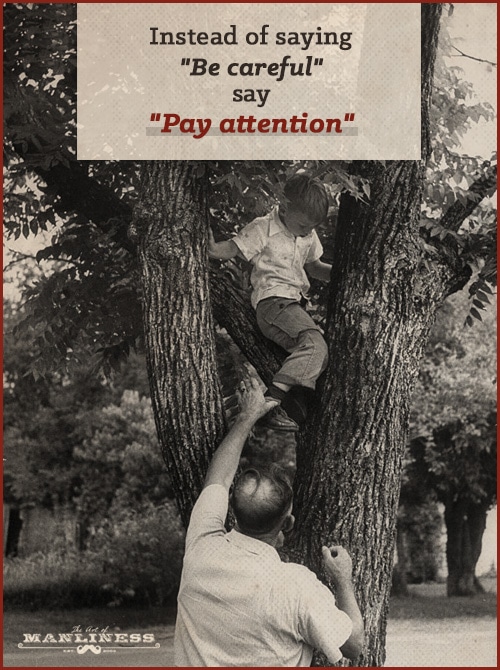
Instead of saying “be careful” say “pay attention.” I picked up this great tip from Richard Louv’s Last Child in the Woods. Constantly saying “be careful” paints the world as an inherently perilous, overly dangerous place, and ingrains a cautious mindset into kids. In contrast, “pay attention” (or “watch what you’re doing”) encourages children to be more aware of their body and their surroundings — a mindset we want our kids to cultivate whether they’re doing risky things or not.
The world doesn’t need more careful children — it needs more wise, perceptive, brave ones.
Treat your kids like apprentices. The modern phenomenon of children spending most of their time in close proximity to their parents isn’t uniquely modern. Before the industrial revolution, children also spent their days side-by-side with mom and dad. But whereas parents now stand as passive witnesses — picture-taking recess monitors — to their children’s play, parents and children formerly worked together. The children were undergoing an informal (and sometimes formal) apprenticeship with these grownups, learning the skills and knowledge they’d need to someday thrive as adults.
It’s time to bring back this apprenticeship concept. There’s nothing inherently wrong with spending a lot of time with your kids — in fact, it can be quite a good thing — but such time can be put to more beneficial use (both for you and for them). It’s not possible or desirable for most parents to take their kids to work every day, but you’re probably already spending most of your off-hours with your children; rather than giving up hobbies, and doing chores when the children go to bed, use these hours to engage in such activities, letting your kids tag along to learn more about your pastimes, as well as some practical skills.
Take your kids hiking with you, and teach them about the forest’s dangers and joys. Lift weights together, and instruct them in proper form while inculcating a love for fitness. Let them help you rake leaves or make dinner (including using — gasp! — a sharp knife) even if their “help” is initially marginal if not detrimental to your efforts.
Treating your children as apprentices will not only teach them important life skills, but even indirectly allow you to become a more hands-off parent. I’ve wondered that in becoming so all-consuming, to the dropping of any outside/adult interests, overprotective parenting hasn’t actually compounded its own cycle of hyper-interaction and dependence: children not only become reliant on parents, but parents become dependent on their children as the only friends and interest in their lives. As a result, parents perhaps subconsciously deepen and extend their efforts to keep their children close — past the point where they’ve become old enough to start striking out on their own — out of the fear that once their children become independent and leave, their own lives will be empty.
So, get some hobbies and interests, mom and dad, and show your kids, and yourselves, that you’re fully-formed human beings, apart from your role as parents.
Don’t intervene in children’s squabbles and activities. One of the negative results of the constant supervision attendant to overprotective parenting, is that mom and dad are now always around to mediate the frequent disputes that arise between kids at play. “Dad, Tyler’s not sharing the football!” Then Dad steps in: “Okay, Tyler, you’ve had the football long enough, please give it to Henry now.”
Part of why unstructured play is so beneficial to child development, is that kids have to learn how to negotiate and compromise. Parents of course can teach them the sound principles of give and take, but unless they practice it on their own, they’ll grow up believing that whenever they feel themselves harmed or wronged by someone else, they’re a victim whose only recourse is to appeal to a third party for help (the fruits of this dynamic are certainly being played out in today’s culture). If you witness children having a dispute, try to let them work it out themselves; better yet, try to be MIA from their arena of play and negotiation altogether.
A similar principle applies to your supervision of children doing their own “dangerous” DIY projects. As part of introducing risk in graduated steps and allowing your kid to be an apprentice, you should certainly supervise your child’s first outings with handling tools, building things, etc. But you should back off as soon as possible, letting them work things out on their own, and offering counsel or grabbing something only if they’re physically incapable of doing so themselves or in immediate danger. As Tulley advises: “try acting like a robot that does only what you are told. Be the big, strong, or dexterous hands that they need, and, most important, let them fail. Then help them figure out why they failed and how to work around it — even if it means starting over.”
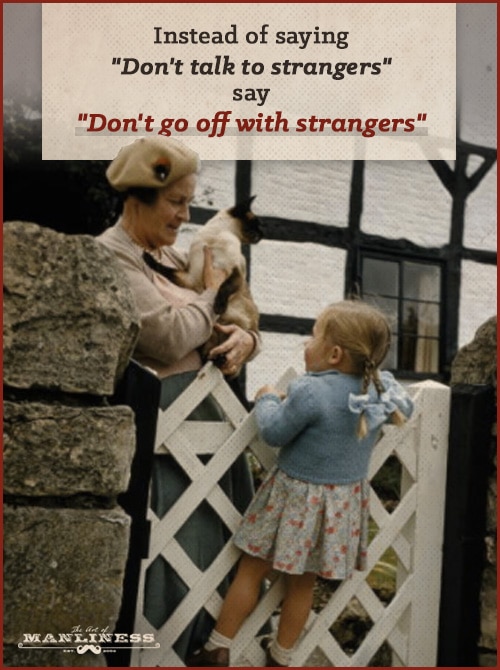
Take a different approach to preparing your children to deal with “stranger danger” (starting with dropping the phrase “stranger danger”). When it comes to mitigating the already minuscule risk of every parents’ greatest fear — child abduction — we’ve all generally been going about it the wrong way.
So says Ernie Allen, head of the National Center for Missing and Exploited Children, who told Skenazy in an interview that part of his work is to “debunk the myth of stranger danger,” in order to teach kids a more reasonable, effective, proactive, and in fact safer way to deal with folks they don’t know.
Typically, the only thing we teach children about strangers is that you should never, ever talk to them. But as Allen points out, this blanket proscription “effectively remov[es] hundreds of good people in the area who could be helping them.” Instead, Skenazy relays, Allen teaches children:
1. Most adults are good.
2. There are a few bad ones.
3. Most normal adults don’t drive up and ask for help.
4. If they do, or if they bother you in any other way, you can ask any other nearby adult for help.
Thus a better phrase to teach kids than “Never talk to strangers,” is “Never go off with strangers.”
And then, you actually spell out what that means. Tell kids to ignore the lures a predator could use to get them in the car — candy or an empty leash that supposedly belongs to the dog he’s looking for. Tell them not to go with a stranger even if he says something nice, or that he needs help, or that their parents sent him to pick them up. And tell kids to raise a ruckus and high tail it out of there if someone tries to get at them.
Allen reports that in cases where a predator tried to abduct a child, but failed, the kids got away “Overwhelmingly, by either running away or fighting back: yelling, kicking, pulling away, or attracting attention.” He thus teaches and has kids practice the things that can actually reduce their chances of being kidnapped:
1. Throwing their hands in front of them like a stop sign.
2. Screaming at the top of their lungs, “No! Get away! You’re not my dad!”
3. Running like hell.
Inculcating this kind of mindset, and giving children this kind of training, helps them narrow the focus of danger instead of globalizing it to everyone, everywhere, and empowers kids to more confidently navigate the world, and their interactions with people. Perhaps just as importantly, giving kids proactive preparation allows parents to feel more confident with letting their children roam and range beyond the confines of the backyard.
3. Maintain a “Free Range” Parenting Mindset
Knowing how to balance risk and safety in your kids’ lives is one thing; continually putting these principles into practice is another. It’s easy to let the very visceral fear (however irrational) of something bad happening to your children derail your efforts at letting them grow up “free range.” Keeping the following mindset essentials at the front of your mind will help:
Make it a core part of your parenting philosophy. Allowing your kids greater independence is not something you’ll be successful at if you just casually think about it and largely go with the flow; as Tim Gill observes in No Fear, “There are significant forces pushing parents, professionals, and voluntary and community agencies towards risk aversion. Where people succeed in resisting these forces it is because they have an explicit philosophy, ethos, or set of values about the role of risk, experiential learning, and autonomy in children’s lives.”
If you want to raise “free range” kids in today’s cautious society, you’ll need to truly believe in the value of doing so, and intentionally make that belief central to your parenting philosophy.
Keep the stats concerning child danger in mind. People often say that data has no effect on fear, because stats are based on reason, while fear often is not. It’s true that people irrationally believe that the world has gotten more dangerous when it hasn’t, and that the risk of a child being kidnapped is significant when it’s actually miniscule. And it’s true that these fears reside in the lower, “reptilian” parts of our brains rather than our higher faculties. But, I can honestly say that learning that I’d have to leave my kids unattended outside for 750,000 years for it to be statistically likely for them to be abducted has made it easier for me to loosen up my formerly constant mode of supervision.
The next time you insist on driving your kid to school because letting them walk is too dangerous, remember that not only does he or she have a 40X greater risk of dying as a passenger in a car than being kidnapped or killed by a stranger, but that half of children who are hit by cars near schools are struck by the very parents who drop them off!
Statistics won’t cure your anxiety, but when the 24/7 news cycle makes childhood tragedy seem way more salient and frequent than it actually is, they will help alleviate it; it’s okay to still worry, just work on keeping the worry in proportion to the danger.
Use history to keep things in perspective. Up through the early 20th century, children, even very young ones, worked 12 hours a day in mines and factories, and hawked newspapers on grimy street corners. There’s nothing romantic about such child labor — unlike the largely imagined dangers of today’s world, such work held real risk for kids. But contemplating the past can help you realize that children are capable of far more autonomy, risk, and responsibility than we currently allow them.
When he was seventeen, Jack London signed on to sail with a schooner bound for seal hunting in the Bering Sea.
When he was thirteen, Andrew Jackson served as a courier for American militias fighting in the Revolutionary War.
When he was twelve, Louis Zamperini left home to spend the summer living on an Indian reservation and running in the mountains; he stayed in a cabin with a friend the same age and killed his own dinner each night with a rifle.
If these kids can sail the oceans, serve on the warfront, and live by themselves, then our kids can ride their bikes to school.
Beware the vulnerability cycle (and turn it into an autonomy cycle). The cycle of overprotective parenting goes like this: Parents feel like their kids are fragile and unable to fend for themselves, and treat them as such. As a result, the kids don’t learn coping skills for dealing with risk and setbacks, and act vulnerable. This display of vulnerability then justifies more parental supervision and intervention, which further keeps kids from firsthand experience with independence and risk. Which makes them more vulnerable. And on the negative cycle goes.
If you think your kids are fairly helpless and dependent on your guidance, it’s likely because your constant supervision has made them such.
Fortunately, the cycle can be run the other way: the more capable and competent you think your kids are, the more you’ll allow them to be autonomous; and the more autonomous you let them be, the more capable and competent they’ll become.
Listen to my podcast with Lenore Skenazy about “free range” parenting:
Series Conclusion: Trust the Odds; Trust Yourself; Trust Your Kid
The concept of “planned obsolescence” might be bad for your refrigerator, but it’s the perfect way of thinking about the ideal of parenting. The need for your supervision, guidance, and protection should have a limited shelf-life, tapering towards the minimal as kids get older and become more mature; our job as parents should be to prepare our children to survive and thrive without us.
When we parent too closely, too intensely, we disrupt this vital process through which children become independent and gradually detach from our care.
Without a doubt, facilitating this gradual transfer of power, and figuring out exactly how hands-on and hands-off to be isn’t easy. Our deepest, most visceral inclination as parents is to protect our children from the pain of every injury and setback. It’s hard to put aside this immediate fear and commit to the idea that a little danger and a little pain is in their long-term best interest.
As I said at the start of this series, striking the balance between risk and safety has personally been hard for me. But researching and writing it has really helped change my mindset. I hope it’s done the same for you.
Ultimately, finding a healthy middle path in your parenting comes down to three maxims: trust the odds; trust yourself; trust your kid.
Trust the odds: The chances of something really bad happening to your kid are really, really small. On the flip side, the chances of their development suffering in the absence of any risk are 100%.
Trust yourself: You can prepare your children to confidently, competently, and safely handle risk.
Trust your kid: Children are capable of grappling with way more than we think. Their resilience will constantly surprise you. But not if you never give it a chance to shine.
Read the Whole Series
The Origins of Overprotective Parenting
Is the World a More Dangerous Place for Kids Than It Used to Be?
The Risks of NOT Letting Your Kids Do Risky Things
3 Keys to Balancing Safety and Risk in Raising Your Kids
__________________________
Sources
Free Range Kids: How to Raise Safe, Self-Reliant Children (Without Going Nuts With Worry) by Lenore Skenazy
No Fear: Growing Up in a Risk Averse Society by Tim Gill
Last Child in the Woods: Saving Our Children From Nature-Deficit Disorder by Richard Louv
How to Raise a Wild Child: The Art and Science of Falling in Love With Nature by Scott D. Sampson
50 Dangerous Things (You Should Let Your Children Do) by Gever Tulley and Julie Spiegler
“The Overprotected Kid” by Hanna Rosin


